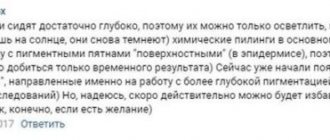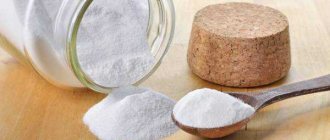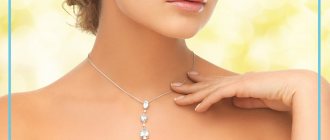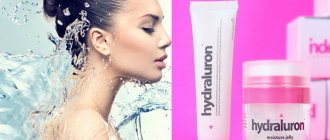Cleansing wine peeling pads – deep facial cleansing
The Korean manufacturer that produces this product has developed a universal form for sponges. The smooth side of the cotton pads effectively cleanses the face of dust and makeup residues, while the textured side helps remove remnants of keratinized epithelium, eliminates blackheads, and tightens pores. Regular use of the product normalizes the functioning of the sebaceous glands, making the skin look well-groomed.
Peeling pads are impregnated with substances that heal the epidermis.
Salicylic acid is widely used in cosmetology. Effectively eliminates inflammatory processes, acne, redness and unevenness. The substance has a beneficial effect on the skin, promoting regeneration and cleansing of dead cells.
Wine extract has a tonic effect on the epithelium, eliminates signs of fatigue and lack of sleep, and protects against the negative influence of the environment . It is a natural antioxidant that removes toxins and waste. The natural component nourishes the skin with beneficial microelements.
Star anise essential oil moisturizes the upper layer of the epidermis, restoring firmness and elasticity, and has a rejuvenating effect on the face, preventing aging.
Panthenol eliminates redness and irritation, has a softening effect on the epithelium . The first assistant in the fight against allergic reactions and sunburn.
Hyaluronic acid renews the skin at the cellular level, activating the rejuvenation process, smoothes expression lines, and restores water balance.
Making a purchase of a cosmetic product in the Ashanti online store is not difficult. The product will be promptly delivered to any region of the country.
Wine peeling for the face and any part of the body
Wine peeling is a cosmetic procedure for treating the skin with a special high-power solution, which is not as widespread as other chemical peels. This procedure belongs to the group of superficial and soft peels, although in some cases it can reach medium depth.
Wine peeling will help both dry and oily skin 10702
In addition to exfoliating and brightening effects, the active components of wine peeling have an antioxidant effect: they actively bind harmful free radical molecules and prevent natural aging of the skin.
Composition and properties of active components of wine peeling
Tartaric acid, which belongs to the group of fruit acids, is the main active component of this peel. It provides gentle and thorough cleansing of the skin from dead skin cells, and also reduces the risk of skin damage during the procedure. Tartaric acid also helps open and clean clogged pores and saturates the skin with beneficial substances.
Tartaric acid is a hydroxy dibasic acid, existing in two stereoisomers (L- and R-), although in the peel it is present as a racemic mixture. This is a natural substance - tartaric acid is naturally found in potatoes, cucumbers, Icelandic moss, black pepper, and also in the juice of many sour fruits. For use in cosmetology, it is usually isolated from grape juice by fermentation, and then it is heated and treated with mineral acids. Tartaric acid has a pleasant lemon smell and easily dissolves in water and alcohol.
The wine peeling solution also contains other, quite strong, acids that act in combination with wine and herbal components, increasing the effectiveness of the procedure. “Additional” agents in the composition of wine peeling vary: these can be alpha and beta hydroxy acids (glycolic, mandelic, lactic, salicylic), as well as poly-hydroxy acids (lactobionic, gluconic), skin-lightening azelaic acid, plus natural vinegars (peach , apple, apricot).
Let's take a closer look at some of the supporting active ingredients - what do they do in a vinegar peel and how important are they in this formula?
- Glycolic acid has an anti-inflammatory and rejuvenating effect, stimulates the synthesis of fibroblasts and collagen.
- Lactic acid has a pronounced moisturizing effect, restores the skin's protective barrier, and increases collagen synthesis.
- Mandelic acid has bacteriostatic, anti-inflammatory, lightening, antioxidant and comedolytic effects.
- Azelaic acid is known for its antimicrobial, antioxidant, anti-inflammatory effect. It also removes comedones well, inhibits excessive growth of melanocytes and proliferation of keratinocytes.
- Lactobionic acid has a moisturizing, antioxidant and rejuvenating effect.
- Gluconic acid is known for its antioxidant and moisturizing effect - it perfectly stimulates the growth of new skin cells.
- Fruit vinegars (apple, apricot, etc.) contain vinegar and other natural ones: apple, lactic, lemon, as well as enzymes, pectin, tannins, vitamins, amino acids - they all act synergistically, helping each other penetrate deeper into the skin.
The wine peeling formula also often contains extracts of red wine and cream of tartar, polyphenols, resveratrol, tannin and other antioxidants, as well as vitamin E. The latter accelerates the process of cell renewal and normalizes the lipid and water balance of the skin. In addition, stimulants for prolonging the action of peeling are added to the formula, such as glutamic, nicotinic and hyaluronic acids, pomegranate oils and extracts of dandelion, nettle and wormwood, as well as jojoba oil, grape seed oil and honey.
Benefits of wine peeling
Wine peeling has shown excellent results in cosmetology practice: it provides uniform and complete exfoliation, and also promotes the renewal of epidermal layers by removing damaged collagen and elastin fibers and stimulating the formation of new ones. In addition, wine peeling has antioxidant and moisturizing effects and demonstrates excellent results in caring for oily skin - it promotes deep cleansing and provides a lasting feeling of velvety and freshness after the procedure. In general, this procedure stimulates the rupture of intercellular contacts in the stratum corneum of the epidermis, which leads to the exfoliation of dead cells (keratolytic effect). In addition, within a few days after peeling, skin rejuvenation processes are intensively launched.
Other positive effects: stimulation of collagen synthesis, prevention of inflammation, elimination of hyperpigmentation and activation of skin stem cells. Among the benefits of wine peeling, it is also worth mentioning the pleasant aroma of the solution, which helps you relax and enjoy the procedure.
It is also important that wine peeling can be used not only on the face or neck, but also on any part of the body. In particular, if you apply it to problem areas, over time the skin on them will become smoother and healthier - this procedure leads to a reduction in the symptoms of cellulite, increasing skin elasticity, improving its characteristics by increasing blood circulation.
The positive effect of wine peeling is achieved by combining various acids with a vinegar complex. Here are the main effects that you can safely expect from wine peeling:
- the epidermis is renewed;
- the skin is moisturized;
- tone and elasticity improve;
- the texture and relief of the skin are leveled and become more uniform;
- sebum secretion decreases;
- pores are narrowed and cleansed;
- small wrinkles are smoothed out;
- pigment spots lighten.
Disadvantages of wine peeling
After wine peeling, hyperemia (redness) is often observed, although it disappears within 2-3 hours after the procedure.
The wine peeling procedure itself is always accompanied by a tingling sensation, a surge of warmth, or even in some cases a burning sensation. However, these sensations are a normal reaction of the skin to acid treatment and gradually disappear. In addition, hyperemia is almost always observed, even in people with severe hyperkeratosis. However, the negative effects are transient and show a tendency to decrease after repeated procedures.
Complications after wine peeling are quite rare. In the case of regular exacerbations of herpes infection, there is a high probability of developing rashes, which can lead to the formation of atrophic or hypertrophic scars. Allergic reactions are also possible - episodes of itching, redness and swelling. Even more rare complications include prolonged inflammation, post-inflammatory hyperpigmentation, and persistent erythema.
Indications for use of wine peeling
The use of wine peeling helps to intensify the exfoliation of dead cells of the surface layer of the epidermis, and also provides a pronounced whitening effect. Thus, it will be useful for brightening and toning skin of any type, especially those with pronounced signs of photoaging after sunbathing or visiting a solarium. The main indications for the use of wine peeling come down to the following problems:
- Oily, problem skin.
- Hyperpigmentation.
- Hyperkeratosis (excessive thickening of the stratum corneum in the epidermis).
- Signs of age-related skin changes associated with environmental stress.
- Signs of photoaging.
Wine peeling is also recommended as a preparatory stage for mechanical dermabrasion, sunbathing and body wraps (toning, anti-cellulite and anti-age).
Contraindications to the use of wine peeling
- Intolerance to any peeling component.
- Exacerbation of infectious and inflammatory diseases.
- Dermatitis of an allergic nature, as well as parasitic and fungal skin diseases.
- Too thin skin with pronounced signs of rosacea.
- Open injuries (wounds, abrasions) on the skin.
- Shaving, waxing and visiting a solarium during the last 2-3 days before the procedure.
- Neoplasms.
- Herpes is in the acute stage.
- Poor blood clotting.
- Menstruation.
- The period of pregnancy and breastfeeding.
Wine peeling procedure: step by step
Preliminary preparation is recommended - the use of a low concentration of fruit acids one or two weeks before the procedure. The wine peeling itself begins with thoroughly cleansing the skin of dust and sebum using a hydrophilic gel or other cleanser. The skin is then treated with a degreasing tonic.
Wine peeling for face 10755
This is followed by exfoliation using a gentle scrub or enzyme peel (preferably containing papain), with particular attention to the T-zone. This stage removes horn cells from the epidermis, which ensures better penetration of beneficial substances into the skin during the next stages of the procedure. In addition, exfoliation, which combines the effects of an enzyme and mechanical peeling, subsequently stimulates more active renewal of skin cells, increases skin elasticity and ensures an even complexion.
Then a special lotion (alpha gel) is applied to the skin and remains there until completely absorbed. For dry or normal skin, use a non-alcoholic toner instead, which has a calming and moisturizing effect. Then, without preliminary rinsing, the wine peeling solution itself is applied with a brush or cotton swab. The solution is left for 1-3 minutes, then the skin is cleansed with warm water and an alkaline neutralizer. In this way, the absence of side effects is checked and confirmed.
The next stage of the procedure involves applying a thin layer of solution, which now remains on the skin for 10 minutes. Then apply and leave for 5-10 minutes the second layer of solution. Afterwards, the skin is cleansed with warm water and a neutralizer.
Then a mask is applied to the skin, which provides a firming and rejuvenating effect. It remains on the skin for 10 minutes, although the duration depends on skin type, the size of the area being treated and the nature of the cosmetic problem. In addition, it is preferable to use a lifting cream for thin skin under the eyes. Finally, the skin is treated with a light cream without oils and fats, which provides it with the necessary amount of moisture, softens it and protects it from negative external influences: tobacco smoke, air-conditioned air, etc.
Wine peeling Magiray 13700
Wine peeling, like others, is carried out in courses. The frequency of these procedures is determined depending on the skin reaction at the first session. The normal response is considered to be peeling for 3-4 days, in which case 6-8 treatments are usually required, carried out at intervals of 7-12 days. If the skin is oily and prone to comedones, inflammation and rashes, this interval can be reduced to 4 days. And in the case of treating dry skin, the intervals can extend for up to 15 days. In order to enhance the effect of wine peeling, it is recommended to repeat the procedure 1-2 times a month after completing the full course.
In addition to salon options, there are also home versions of wine peels that are easier to use, for example, Neogen Dermalogy Bio-Peel Gauze Peeling Wine in the form of pad applicators that you put on your fingers and wipe your face with them.
Ready-made formula for Neogen Dermalogy Bio-Peel Gauze Peeling Wine 11093
Recovery after wine peeling
First, the skin should be constantly protected from the negative effects of ultraviolet rays using sunscreen with SPF 30 or higher. In addition, it is recommended to use moisturizing and nourishing solutions that are selected taking into account the characteristics of the skin type and its problems.











